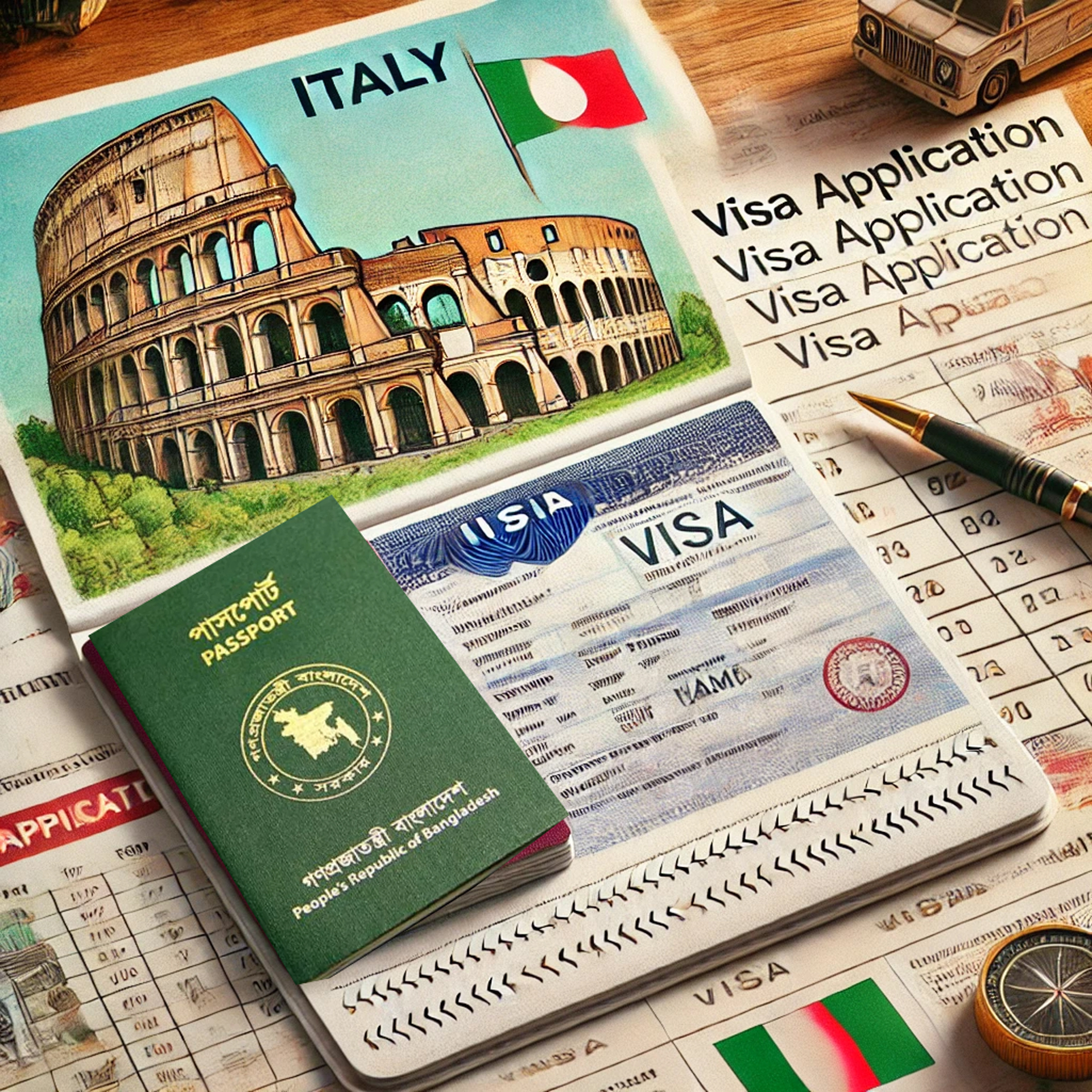Italy, renowned for its rich history, stunning architecture, delectable cuisine, and vibrant culture, is a dream destination for many travelers around the globe. Whether you are visiting its historic cities, basking in the sun on the Amalfi Coast, or indulging in authentic Italian cuisine, obtaining a visa is an essential step for many international visitors. This blog post aims to provide a comprehensive guide to the Italy visa application process, ensuring you are well-prepared for your journey to the enchanting land of la dolce vita.
Italy Visa Application Process: Types of Italian Visas
Before delving into the Italy visa application process, it’s crucial to understand the different types of visas available for those wishing to visit Italy. The type of visa you need will depend on the purpose of your visit, duration of stay, and nationality.
1. Schengen Visa (Type C)
The Schengen Visa allows travelers to visit Italy and other member countries for short stays of up to 90 days within a 180-day period. This visa is suitable for tourism, business, or visiting friends and family. Travelers from a wide range of countries are required to apply for this visa before entering Italy.
2. National Visa (Type D)
The National Visa is designed for individuals planning to stay in Italy for more than 90 days. This visa is commonly obtained by students, workers, and family members of Italian citizens or residents. The Type D visa allows for long stays and is applicable for various purposes, such as employment, study, or family reunification.
3. Transit Visa (Type A)
If you are traveling through Italy to reach another destination outside the Schengen Area, a Transit Visa may be required, depending on your nationality. This visa permits you to transit through the international zones of Italian airports.
Who Needs an Italy Visa?
Visa requirements for Italy vary based on your nationality and the purpose of your visit. Citizens from EU/EEA countries, as well as a few other nations (such as the United States, Canada, New Zealand, Australia, and Japan), do not require a visa for short stays. However, always check the latest regulations specific to your country of origin, as rules change frequently.
For those requiring a visa, a thorough understanding of the application process is essential to avoid any hassles and enhance the likelihood of approval.
Italy Visa Application Process
To obtaining Italy visa you have to follow the following Italy visa application process:
Step 1: Gather Necessary Documents
Before applying for a visa, ensure you have all the required documentation. Here is a list of common documents required for a Schengen Visa application:
Visa Application Form: Complete and sign the application form, which can often be found online or at the consulate/embassy.
Passport: Your passport should be valid for at least three months from your planned departure date from the Schengen Area and have at least two blank pages.
Passport-Sized Photos: Recent color photographs meeting Schengen visa photo requirements.
Travel Insurance: Obtaining travel insurance covering medical emergencies, accidents, and repatriation with a minimum coverage of €30,000 is mandatory.
Proof of Accommodation: A reservation confirmation or proof of accommodation for your stay in Italy (evidence of hotel bookings, rental agreements, or an invitation letter from a host).
Flight Itinerary: Provide a copy of your round-trip flight reservation or itinerary indicating entry and exit from Italy.
Proof of Financial Means: Documentation proving you have sufficient financial resources to support yourself during your stay (bank statements, sponsorship letters, etc.).
Visa Fee: The visa fee varies depending on the type of visa and applicant’s age.
For long-term visas (Type D), additional documentation may be required, such as acceptance letters from educational institutions or employment contracts.
Step 2: Schedule an Appointment
Once you have gathered your documents, schedule an appointment with the nearest Italian consulate or visa application center (VAC). Depending on the location, this may be done online or by phone. Ensure you book your appointment well in advance of your intended travel date, as waiting times can vary significantly.
Step 3: Submit Your Application
During your appointment, submit your completed application form along with the required documents. In some cases, biometric data (fingerprints and photographs) may be collected during the submission process.
Step 4: Attend an Interview (if necessary)
Some applicants may be required to attend an interview, during which a consular officer will assess your application and documents. Be prepared to answer questions about your travel intentions, financial means, and ties to your home country.
Step 5: Wait for Processing
The processing time for an Italy visa varies but generally takes around 15 calendar days for a Schengen Visa. For Type D visas, processing times may be longer. During busy seasons, or if additional documentation is required, processing may take additional time.
To avoid potential inconveniences, it’s advisable to apply as early as possible, ideally 2-3 months prior to your intended travel date.
Step 6: Receive Your Visa
When your application is approved, you will be notified to collect your passport. The visa will be affixed to your passport, outlining the validity, duration of stay, and other essential details. Ensure that the information is accurate and matches your travel plans. In case of any discrepancies or rejection, you may appeal the decision through the relevant channels.
Tips for a Smooth Application Process
Some essential tips for Italy visa application process.
1. Double-Check Your Documents: Consistency is key. Ensure that all documents are correctly filled out and consistent with each other.
2. Be Honest and Transparent: Providing truthful information in your application is crucial. Any inconsistency could lead to delays or denial.
3. Stay Updated: Visa regulations are subject to change. Check the official website of the Italian consulate or embassy for the most current information regarding requirements and processes.
4. Consider Professional Assistance: If the visa process feels overwhelming, consider hiring a reputable visa agency or legal adviser specializing in immigration.
Conclusion
The experience of applying for an Italy visa can be intricate, but thorough preparation can significantly enhance your chances of approval and minimize stress. By understanding the types of visas available and following each step of Italy visa application process meticulously, you can focus more on planning your Italian adventure. Whether you’re strolling through the historic streets of Rome, savoring pasta in Florence, or exploring the canals of Venice, obtaining your visa is merely the first step toward the unforgettable experiences awaiting you in Italy. Safe travels!


0 Comment